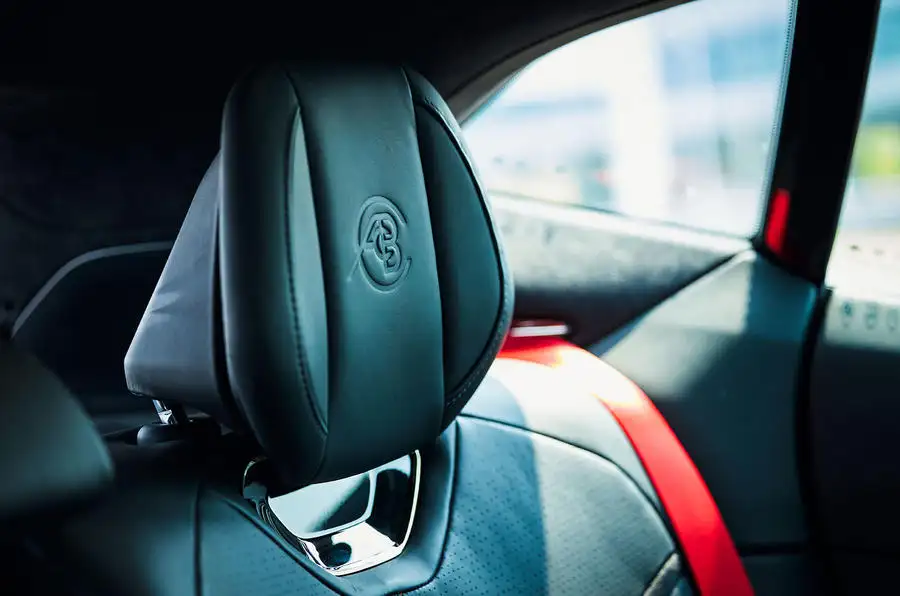Sacrilegious to some but inviting to many more, this stonking great electric SUV from China heralds a new dawn at Lotus.
Well before reaching Wuhan to experience the Lotus Eletre, I already know the answer to one question. This is undoubtedly the most radical road-going Lotus of all time, even by the high standards of this innovative company.
Even 10 years ago, the idea of a Chinese-built electric SUV wearing Lotus badges would have been inconceivable. Now Chinese customer deliveries have started and I’m driving a near-finished European-market example.
The Eletre sits on Lotus’s all-new Electric Premium Architecture, which will soon underpin two more cars, these a sleek saloon and a smaller SUV. There’s plenty of room in the Eletre’s shadow for a more compact sibling, it being 5103mm long and weighing about 2400kg.
Other brand firsts include four-wheel drive (thanks to a motor on each axle), air suspension, active rear steering and support for higher-level autonomy.
The Eletre will launch in Australia next year, although pricing and specifications of the three models are yet to be detailed. The entry-level car and the S share the same 450kW/710Nm peak output from 222kW motors, the difference instead being in sportiness of character. The flagship R swaps the rear motor for a 445kW one with a two-speed gearbox, giving a system total of 675kW. Both powertrains use a 112kWh battery pack, which supports DC charging at an ultra-fast 420kW.
So although the targeted WLTP range of 600km (489km for the R) is impressive, Lotus engineers reckon the ability to gain up to 400km of range in just 20 minutes (once public charging infrastructure catches up) is the more important statistic.
My drive was restricted to the test track that has been built at Lotus’s vast new Wuhan factory. By the standards of the Chinese facilities I’ve experienced, it was pretty good – narrower than a race circuit but featuring a kilometre-long straight and 13 corners, most pretty tight but a couple of quicker sections too.
To no surprise, even the Eletre’s least potent powertrain is plenty quick, capable of delivering both chirped Pirelli P Zeros on a full throttle launch and forceful longitudinal g-force loadings.
Lotus quotes a 0-100km/h time of 4.4sec, which feels right. Yet the acceleration stays strong even beyond 120km/h, where EVs often start to fade, accompanied by a nice synthetic soundtrack that gives a sense of building speed without overpowering the experience.
Switching to the R and selecting Track mode proved that it’s brutally fast. Lotus claims a 0-100km/h time of 2.9sec, and there’s no need to select a launch-control function to achieve that: just stopping with the brake-hold function active means all that’s required for an optimal take-off is an unscientific accelerator flooring.
At the insistence of Wuhan plant director Xi Tan, I discovered that keeping the pedal pinned would get the R touching an indicated 240km/h at the end of the long main straight.
With the notable exception of the limited-edition, $3.8 million-plus Evija electric hypercar, the R will undoubtedly be the quickest Lotus yet to wear numberplates.
Braking is equally assured. While carbon-ceramic discs with huge 10-pot front calipers will be an option, all the cars we’re trying here have the standard steel discs. While the carbons would obviously bite harder, the regular set coped well with the sort of thermal loadings that most buyers are unlikely to ever inflict, resisting fade well.
Under gentler use, they blend their efforts deftly with the motors’ energy regeneration, and the brake pedal also feels firm and natural.
Differing levels of lift-off regen can be selected using a steering wheel-mounted paddle (the one on the other side toggles between the driving modes), but even in the strongest setting, the mechanical braking feels a little gentle.
Lower-intensity throttle response is also good and proportionate, as it should be in a Lotus.
I had no chance to analyse the Eletre’s ride compliance in depth, the only bumps I could find being the track’s serrated apex kerbs, but it’s clear that there’s a wide spread between the extremes of the air springs and adaptive dampers.
The gentlest driving mode, Tour, made the Eletre S feel obviously soft, its nose rising noticeably under hard acceleration and its body leaning under cornering loads, albeit only to the degree permitted by the active anti-roll system.
The change in Sport mode is clear even on a billiard-table surface, the S becoming immediately tauter and keener to change direction.
The R’s additional Track mode automatically lowers the air-adjustable ride height to its lowest position while turning the adjustable settings up to 10.
Like the Lamborghini Urus Performante (which has a V8), the Eletre is always going to be an SUV that can perform on a track rather than a track car in the shape of an SUV. Active systems can disguise some effects of Newtonian physics and mitigate others, but ultimately there will always be an uncheatable challenge in persuading mass to turn. So although the combination of a keen front end and active rear steering gives sharp initial responses, these quickly fade to understeer in tight corners – sometimes excessive amounts.
To be fair, all of the cars I drove were still pre-production and Lotus says the final European dynamic settings are still being decided. There was also the challenge of sapping 35deg C heat and high humidity, causing tyre pressures to rise rapidly under hard use.
When I did get to drive an R on fresher and cooler rubber, it felt much more neutral, especially when turned in to a corner under braking. It also felt very stable when asked to change direction at speed.
The rear axle uses an open differential and vectors torque by braking individual wheels, so it can’t match the response speed or 100% side-to-side ability of individual wheel motors. At the limit, the Eletre can be felt trying to maximise grip and traction, but the prototypes didn’t feel particularly playful. (And despite asking nicely, I wasn’t allowed to deactivate the stability control in any of them.)
Steering is the other area where the Eletre feels obviously different to any previous Lotus, and not just as it’s the first to use electric assistance. The cars I drove also had a variable-ratio rack, this cutting down the wheel angles required in tight bits but also denying the absolute proportionality that Lotus is best known for. Feel was present but definitely muted by the brand’s voluble standards. Apparently there will also be a fixed-ratio steering system, one that is likely to be more traditionally Lotus-like.
Build quality is high, with consistent gaps between the intricately stamped panels and a beautiful paint finish.
Inside, there’s generous space front and rear (both four-seat and five-seat configurations will be available) and the huge amount of technology didn’t inflict digital overload on me, there being a narrow instrument screen in front of the driver, a 15.1in infotainment touchscreen and a configurable display for the front passenger.
While the cars I tried were trimmed to Chinese-market expectations, with some vibrant colour and trim choices, buyers will obviously be able to dial things down if they want to. The Eletre is a very different-looking car in black than green or yellow.
Which brings us to the existential question that has been lurking since the very start of this review: can the Eletre be truly considered a Lotus? You don’t need to be an Elan-owning Colin Chapman disciple to see the idea of a 2.4- tonne SUV as being far removed from the minimalist ethos that has always defined the brand.
Many will never be convinced. But the Eletre is one of those cars that seems certain to redefine the brand selling it – a point proved by Lotus’s hope that by 2028 it will be selling no fewer than 150,000 examples of the model and the two other Wuhan-built platform buddies that will closely follow it.
If that or even anything close to it happens, Lotus will become a maker of plush four-wheel-drive cars with a sideline in sports cars. Which, looking back 20 years, was pretty much the situation at Porsche when it launched its first SUV.
Does the Eletre feel further from Lotus’s core values than the Cayenne did Porsche’s? On first impressions, yes. But that doesn’t mean this isn’t the right decision, and the very fact that Porsche has yet to launch its own electric SUV suggests Lotus is the one ahead of the game.














